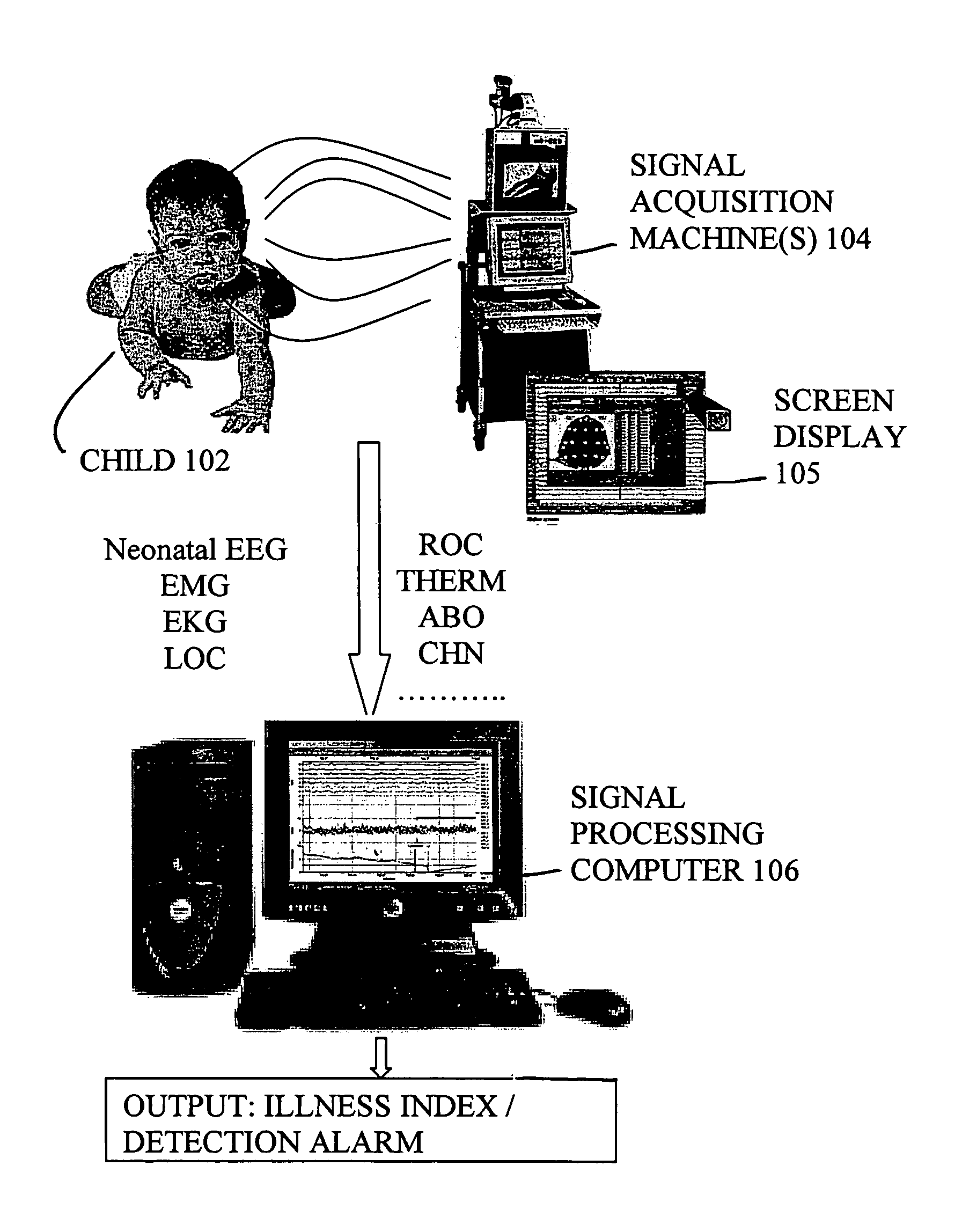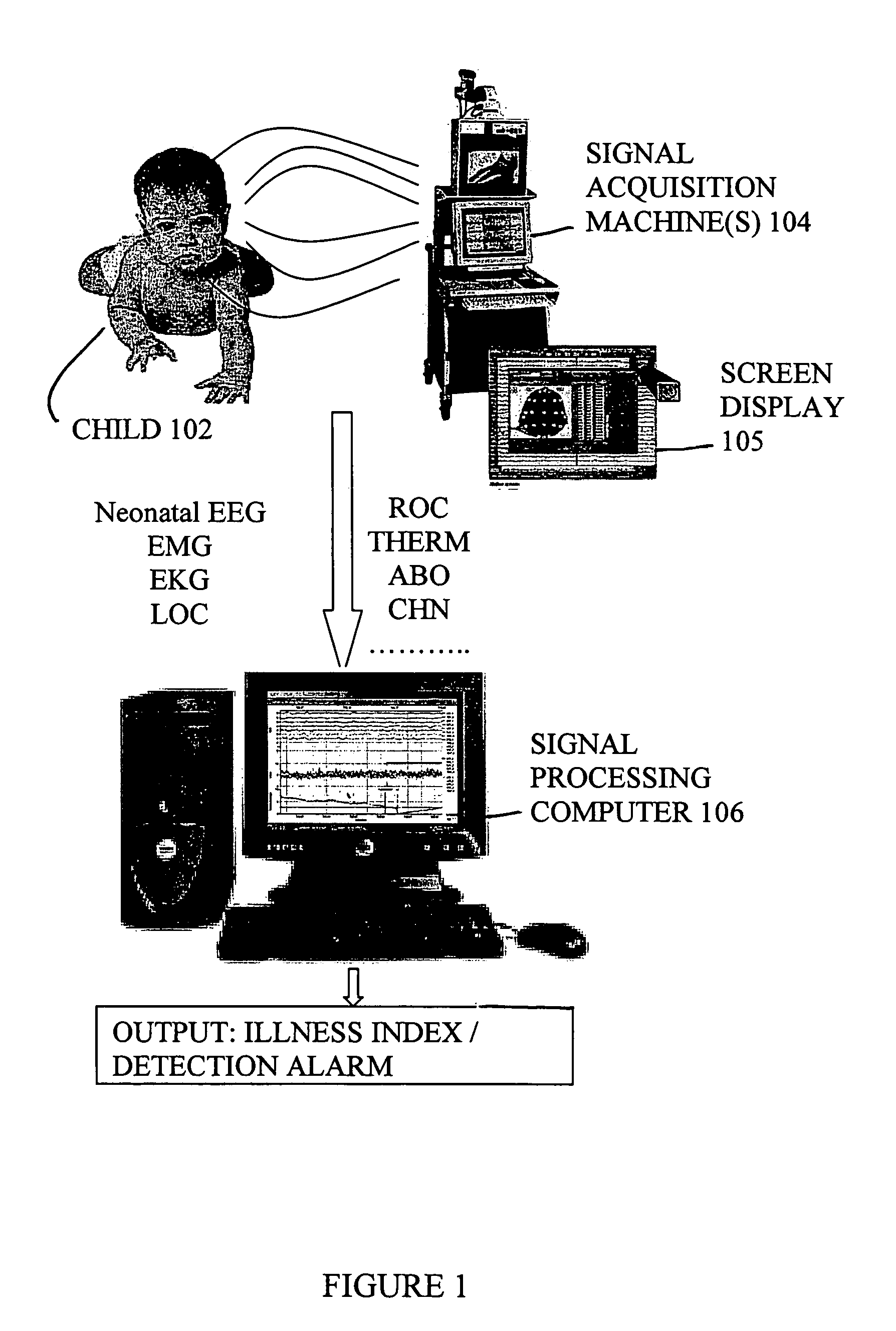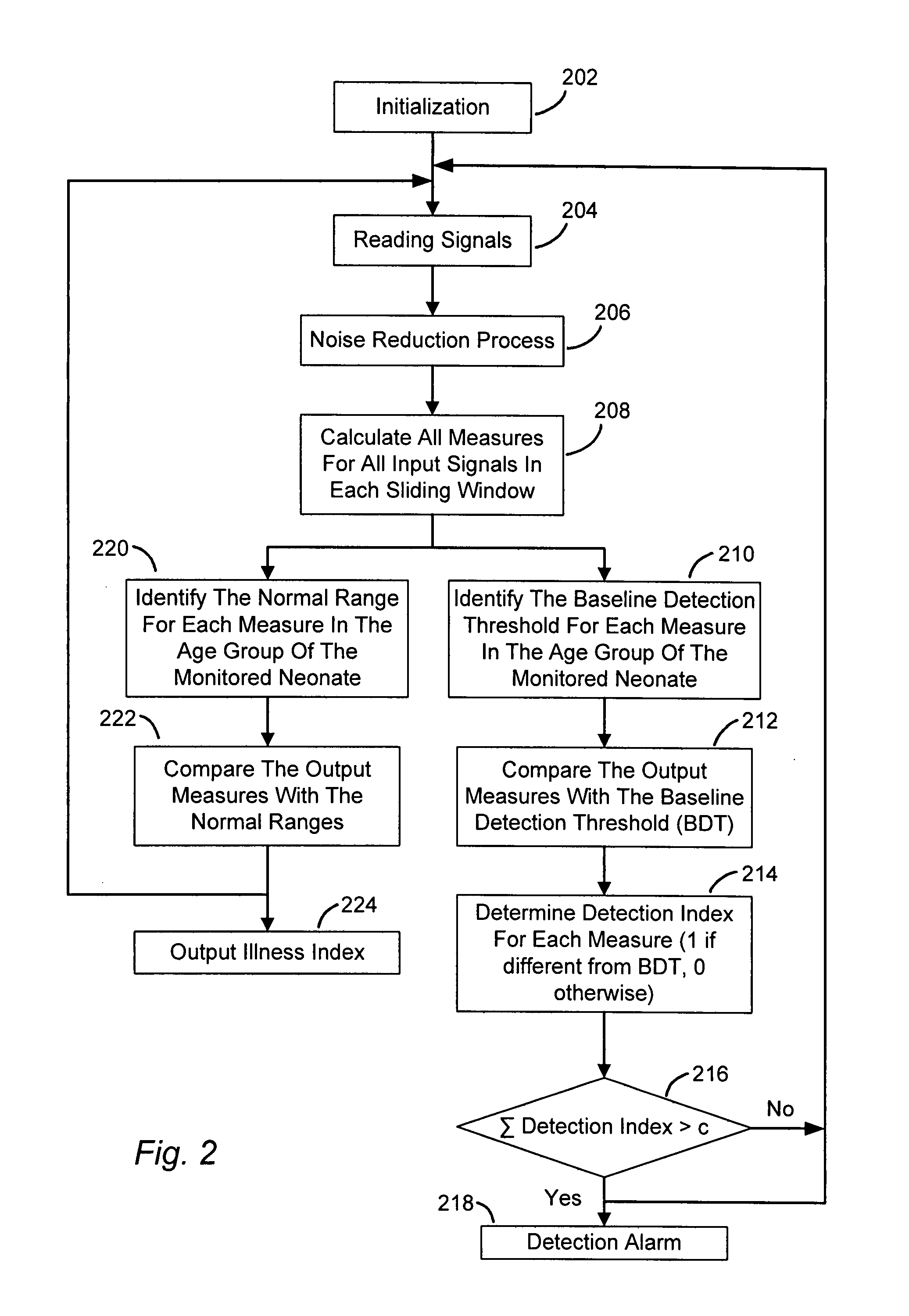Real-time brain monitoring system
a brain monitoring and real-time technology, applied in the field of real-time brain monitoring system, can solve the problems of difficult clinical identification, limited clinicians' effectiveness in infant children's care, functional abnormalities,
- Summary
- Abstract
- Description
- Claims
- Application Information
AI Technical Summary
Problems solved by technology
Method used
Image
Examples
Embodiment Construction
[0012]FIG. 1 illustrates an exemplary neonatal medical monitoring device, wherein a child 102 is monitored by a signal acquisition machine 104. Signals monitored or acquired include electroencephalographic (EEG) data (including for example left oculocephalic channels (LOC) and right oculocephalic channels (ROC)), temperature (e.g. from a nasal thermistor), heart rate, oxygen saturation (e.g. pulse oximetry), electromyogram (EMG) data, electrocardiogram (EKG), level of consciousness, abdominal channel (ABO) data, chin electrode (CHM) data, and so forth. The signal acquisition machine 104 can include a display, for example that displays the captured data and / or other information, as shown in the exemplary screen display 105. Captured data is transferred from the signal acquisition machine 104 to signal processing computer 106, which evaluates the data and outputs an illness index and / or an alarm signal(s) based on the evaluation. The alarm can be visual (e.g. featured on a display of ...
PUM
 Login to View More
Login to View More Abstract
Description
Claims
Application Information
 Login to View More
Login to View More - R&D
- Intellectual Property
- Life Sciences
- Materials
- Tech Scout
- Unparalleled Data Quality
- Higher Quality Content
- 60% Fewer Hallucinations
Browse by: Latest US Patents, China's latest patents, Technical Efficacy Thesaurus, Application Domain, Technology Topic, Popular Technical Reports.
© 2025 PatSnap. All rights reserved.Legal|Privacy policy|Modern Slavery Act Transparency Statement|Sitemap|About US| Contact US: help@patsnap.com



